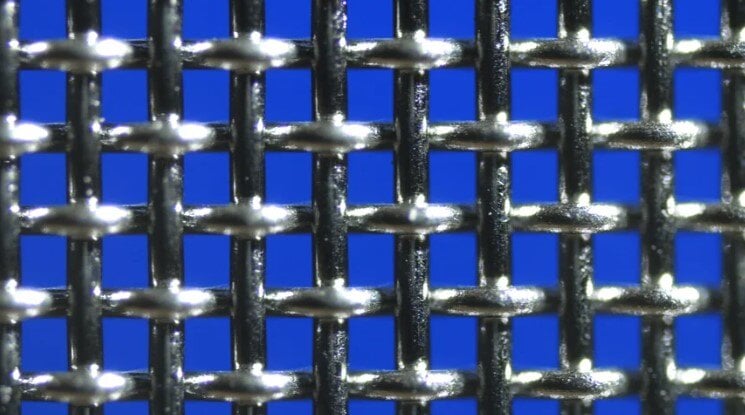Wire Mesh vs. Metal Enclosures: What’s Best for EMI Shielding?
The development of EMI shielding is rarely straightforward, especially when it comes to balancing performance, weight, space, and cost. While traditional metal enclosures offer robust protection, they can also introduce limitations like added bulk, reduced airflow, and unnecessary complexity in increasingly compact and agile electronics systems.
Woven wire mesh presents a compelling alternative, offering both flexibility and shielding performance that can better align with modern EMI demands. Its ability to deliver high shielding effectiveness while remaining lightweight and customizable makes it an increasingly preferred material for design engineers.
At W.S. Tyler, our mission is to make the world cleaner and safer through precision-engineered wire mesh solutions, backed by over 150 years of expertise in filtration and shielding technologies. We help engineers make smarter decisions by pairing performance-driven mesh designs with the needs of next-generation applications.
In this article, we’ll walk you through the critical differences between woven wire mesh and solid metal enclosures in EMI shielding. You’ll learn what questions to ask when comparing the two, how wire mesh meets today’s evolving shielding requirements, and why certain enclosure designs can actually hinder long-term performance.
Wire Mesh and Metal Enclosures: Which Meets Your Shielding Goals?
When selecting an EMI shielding solution, engineers often start by weighing the trade-offs between traditional metal enclosures and woven wire mesh. Both options offer conductive protection, but the way they interact with your design goals, such as airflow, weight reduction, special constraints, and modularity, can differ significantly.
Metal enclosures are known for their structural rigidity and durability. They often perform well in harsh environments, especially when complete coverage is necessary.
However, this strength comes at the cost of flexibility. Enclosures can be bulky, harder to integrate into compact electronics, and challenging to modify post-installation.
Woven wire mesh, on the other hand, provides a lightweight, adaptable shielding solution that supports airflow and mechanical flexibility without sacrificing shielding effectiveness. It can be used in standalone shielding or integrated into gaskets, vents, and enclosures to maintain conductivity while allowing better thermal management and design agility.
Understanding which solution aligns with your specific performance targets is the first step in building an EMI shielding strategy that works long term.
How Mesh Responds to Modern EMI Shielding Demands
As electronic systems continue to shrink in size and grow in complexity, EMI shielding materials must adapt to new performance requirements. Today’s engineers need solutions that not only block interference but also integrate seamlessly into compact, multifunctional designs.
Woven wire mesh is uniquely equipped to meet these demands.
Unlike rigid metal enclosures, mesh can be tailored to irregular shapes, used in layered assemblies, or embedded in flexible gaskets and ventilation components, all without compromising shielding performance. Its open-area design also enables passive cooling and airflow, which is critical in densely packed electronic assemblies.
Additionally, woven wire mesh offers a wide range of customization options. By adjusting parameters such as mesh count, wire diameter, and weave type, engineers can dial in the ideal balance of shielding effectiveness, airflow, and mechanical strength.
Need to learn about the best specs for your mesh in the EMI shielding industry? Check out more by reading our article below:
This level of design flexibility is especially valuable in industries like aerospace, telecommunications, and medical devices, where performance must be both precise and adaptable.
As EMI challenges evolve, so too must the materials used to control them. Woven wire mesh rises to that challenge by offering both time-tested reliability and modern versatility.
When Traditional Enclosures Complicate Shielding Performance
Metal enclosures have long been a standard solution for EMI shielding, particularly when maximum physical protection is a priority. However, their rigid design and solid construction can introduce unintended challenges in today’s evolving electronic landscape.
One of the biggest limitations is thermal management. Fully enclosed metal housings restrict airflow, leading to potential overheating in high-density electronic systems. In contrast, woven wire mesh allows for passive ventilation while still delivering strong EMI attenuation, helping maintain both performance and temperature control.
Additionally, metal enclosures often require custom machining, grounding, and sealing to function effectively in dynamic EMI environments. This is especially true when used with connectors, gaskets, or ventilation ports.
These added components not only increase design complexity but can also create points of vulnerability if not implemented precisely.
Woven wire mesh simplifies this process. Whether used in full enclosures, integrated into seals, or combined with other shielding components, it provides targeted protection without the engineering trade-offs that traditional enclosures can bring.
For engineers working on compact, thermally sensitive, or performance-critical designs, traditional metal enclosures can feel like more of a constraint than a solution.
Build for the Future With Smarter Shielding Materials
As EMI shielding continues to evolve alongside increasingly compact and complex electronic systems, the materials used to protect against interference must keep pace. While metal enclosures have traditionally served as a go-to solution, they can introduce design constraints and shielding inefficiencies in today’s high-performance applications.
Woven wire mesh provides a more flexible and scalable alternative, enabling finer control over shielding effectiveness, reduced weight, and improved adaptability to modern enclosure designs. It gives engineers the ability to optimize for both protection and performance.
At W.S. Tyler, we believe better shielding starts with better material insight. With over 150 years of engineering expertise, we help to build systems that are more secure, more reliable, and more prepared for what’s next.
Learn more about the importance of precision with woven wire mesh. Read about it in our article:
About Dylan Polz
Dylan is a Content Writer with 2 years of experience in marketing and SEO. Passionate about learning and strengthening his writing skills, he is currently expanding his expertise in particle analysis and woven wire mesh technologies. With a strong belief in the power of information to drive positive change, his goal is to develop content that supports cleaner, safer solutions across all industries.



